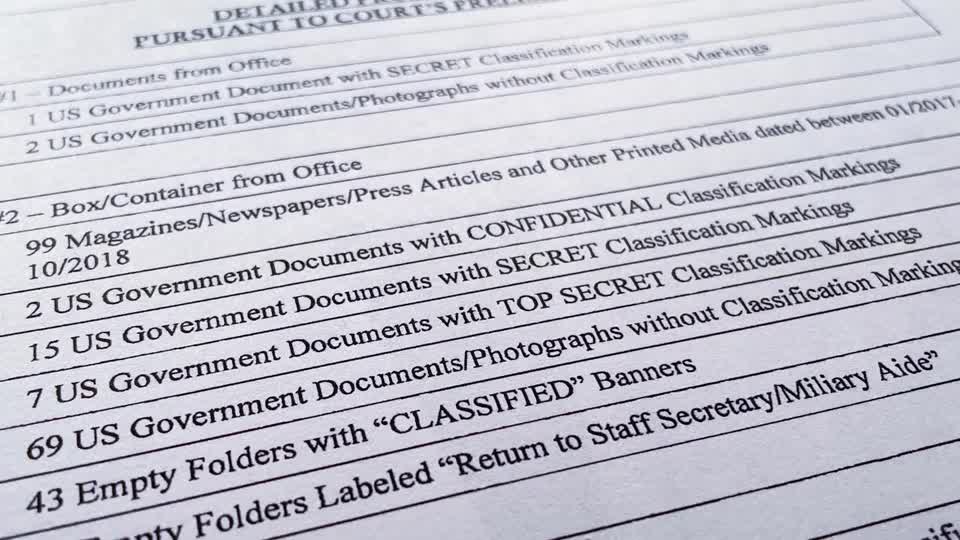
Lauren C. Moye, FISM News
[elfsight_social_share_buttons id=”1″]
In compliance with a Thursday court order, the Justice Department released a detailed inventory of items yesterday that were seized in the federal raid of former President Donald Trump’s Mar-a-Lago estate.
On Aug. 8, Federal Bureau of Investigation agents seized 33 boxes of material from a storage room and Trump’s office in the first raid of a former U.S. president’s home. Judge Aileen Cannon, residing over Trump’s resulting lawsuit, ordered on Thursday for a detailed inventory list to be released.
The Justice Department filed a detailed property inventory with the Southern District of Florida yesterday to comply with this order.
The document reveals that out of 12,853 items seized in the raid, the FBI’s filter team found 31 documents labeled Confidential, 54 documents labeled Secret, and 18 documents labeled Top Secret.
Only 16 boxes of seized material contained these documents. The other 17 boxes contained harmless items like gifts, books, clothing articles, and newspaper clippings. There were also empty folders recovered, including some marked Classified.
“The new ‘detailed’ inventory list only further proves that this unprecedented and unnecessary raid of President Trump’s home was not some surgical, confined search and retrieval that the Biden administration claims,” said Trump spokesman Taylor Budowich on Twitter.
These document disputes should be resolved under the Presidential Records Act, which requires cooperation and negotiation by NARA, not an armed FBI raid. 2/2
— Taylor Budowich (@TayFromCA) September 2, 2022
However, the FBI raid itself stems from a National Archives and Records Administration’s (NARA) report to the House Oversight Committee and Department of Justice that classified national security information was found among documents voluntarily surrendered to NARA control from the Mar-a-Lago estate in January, according to the recently unsealed but heavily redacted affidavit for the search warrant.
The affidavit reveals the FBI opened a criminal investigation to determine if other classified documents were stored without authorization at the former president’s home. The purpose was also to “identify any person(s) who may have removed or retained classified information without authorization and/or in an unauthorized space.”
The unsealed property list records that 3 Confidential documents, 17 labeled Secret, and 7 Top Secret files were recovered from Trump’s office. The others were found in the materials taken from the storage room.
Specific details of the seized property and classified documents have not been released.
Criminal defense attorney Christopher Kise, Trump’s new legal representation, told Cannon that the documents were declassified under a president’s authority. This means the case is about “presidential records in the hands of a former president.”
Trump has asked for a “special master” to be appointed to review documents seized by the FBI. His lawyers claim some documents should be excluded from the probe under either executive privilege or attorney-client privilege.
The judge has not yet released a decision on this request, although Cannon has signaled a willingness to grant this request.
The Justice Department has argued against this special master appointment, saying that the role is unnecessary since Trump did not own the documents in question since he was no longer president.
